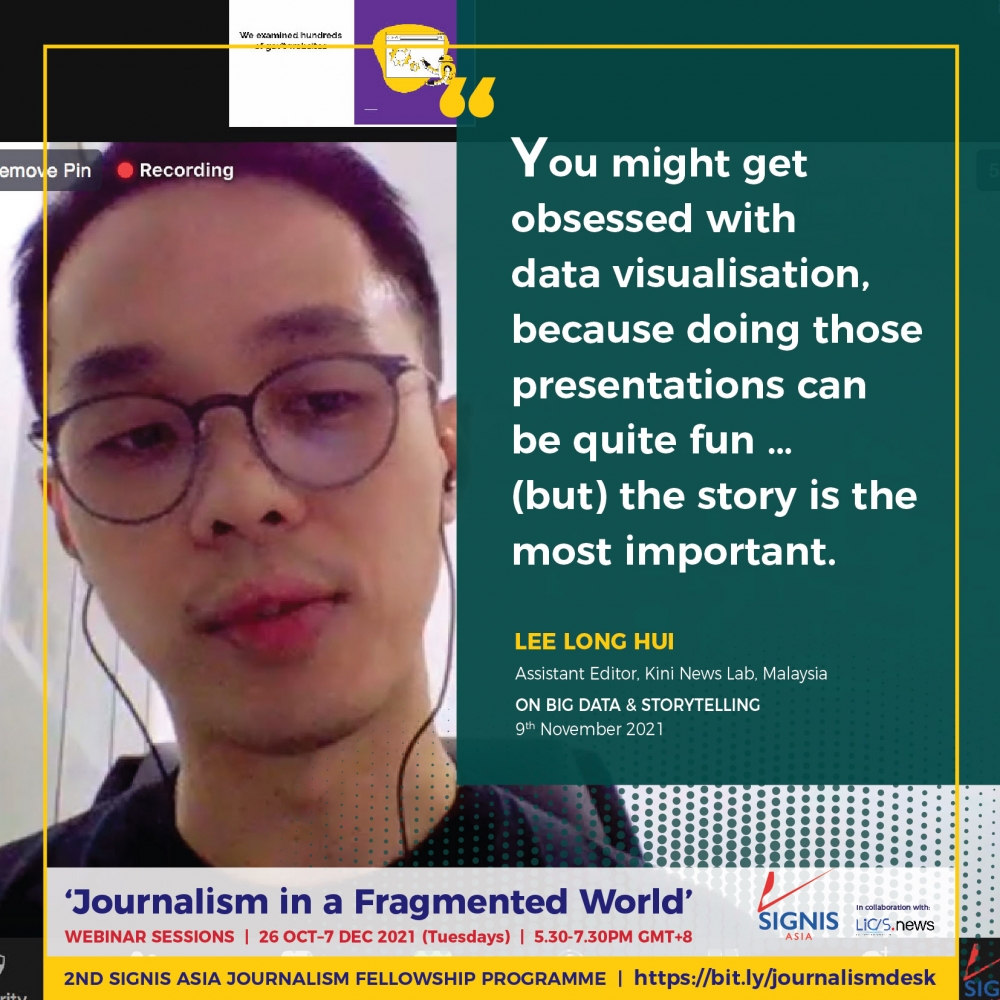Second Workshop of the Journalism Fellowship Program 2021
By Maria Chiara De Lorenzo
Find one data-driven story and ask yourself the following: Where was the data sourced from? Is the data obtained reliable? How did having that data help make the story better? Why is this story important to tell? If this story was yours, how could you have improved on it to make it better? This was one of the practical exercises offered to the 25 participants of the webinar, coming from different Asian countries, like Japan, Singapore, Philippines, Malaysia, Kenya, Bangladesh, India but also from Ecuador in Latin America and South Sudan in Africa. And so, in a couple of minutes a quick tour of the world through media resources was covered. After the workshop on Media as a Catalyst for Change: Solutions Journalism (Nov. 2) the Fellowship led the professionals to another key theme, Big Data and Storytelling.
If Big Data reminds us of Big Brother, a centralized observer of our digital life, and therefore with a negative nuance, let’s try to understand how to turn it into a positive asset for our storytelling mission instead. The three speakers, Trinna Leong (Teaching Fellow, Google News Lab Southeast Asia), Lee Long Hui (Assistant Editor, Kini News Lab, Malaysia), Prof. Richardus Eko Indrajit (Rector, Pradita University, Indonesia) after sharing their insights in the main session, alternated themselves in the three breakout rooms: a vibrant space for questions and reflections.
But let’s go back to the main room: Trinna Leong, who usually conducts training for newsrooms, gave an overview of useful tools that can be used to visualize data in an easy way, set up data and incorporate it in stories to make them more attractive (https://datagifmaker.withgoogle.com/ or https://flourish.studio/ among others). Where to find the data? Governments in different countries are now offering open data and can be a first source (see https://datacommons.org/ or https://data.worldbank.org/, https://comtrade.un.org/data/ among others).
Different sources are interesting for different topics to be covered in your stories (business, health, etc). But it does not work like that everywhere.
How the Kini News Lab helps cover stories with data, was the presentation by Lee Long Hui. He started with a question: what scenario is before us if you can’t even find the data? Most of the data does not come in the format we need: some governments could decide to just publish infographics on FB pages or on pdfs, which is not useful. Some data must be paid for! How do they overcome the obstacles in Kini News Lab? They try to create their own data set, by examining hundreds of Government websites. Not all of them are secure. So, they make their editorial decision on what websites they can rely on for their stories, verifying the security status. Lee explained it with an example: for the Covid-19 coverage, the Kini News Lab offered data analysis before an official Covid-19 dashboard was set up by the government.
Finally, Prof. Indrajit highlighted the ethical challenges that big data storytelling meets daily, in the face of the post-truth phenomenon: tell the whole truth, cover both (or more) sides for balance, replicate only validated data, don’t lead to negative behavior, and do not hide relevant data just because it doesn’t match your story.


